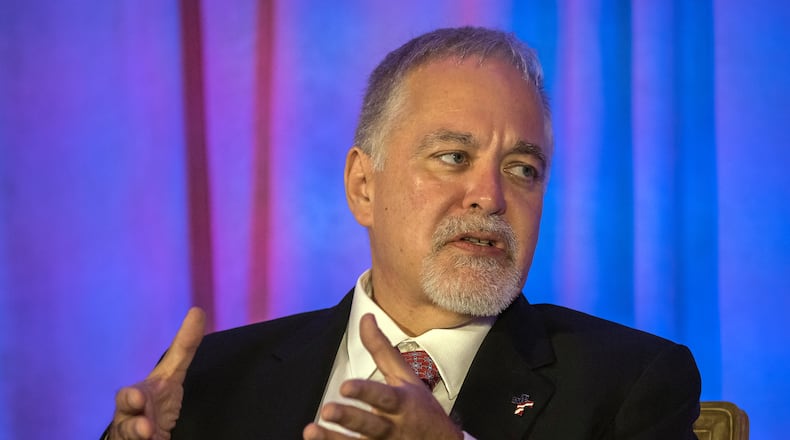Georgia School Superintendent Richard Woods said Monday he wants every public school in the state to have a school resource officer and a crisis alert system.
He called these “common sense measures” in a statement released Monday, echoing a similar call from one of the state’s top Republicans last week. Woods weighed in less than two weeks after police say an Apalachee High School student shot and killed four people and injured nine others at the Barrow County school.
“As we reflect on the tragedy at Apalachee High School, it is crucial that we redouble our efforts to secure our schools and protect every student in our state,” Woods wrote. “There is also early evidence (these measures) made a difference at Apalachee.”
The school implemented the Centegix crisis alert system about a week before the shooting, Barrow County officials said. Staff at the school wore badges that allowed them to alert authorities to the threat and their location with just a few clicks of a button. Authorities have credited the system — and the actions of school resource officers who confronted the shooter — with preventing more harm at the school.
Woods will push for the state budget to include additional funding for school safety to make sure all schools are equipped with an officer and a crisis alert system, the statement said. He did not indicate how much funding either effort would require.
The National Association of School Resource Officers recommends one officer in every school. There are 2,179 school resource officers employed by school districts in Georgia this year, data collected by the state Department of Education shows. There are about 2,300 schools in the state. The state does not track the number of SROs per school; some schools have multiple SROs.
Research shows that while SROs can reduce some violence in schools, they don’t necessarily prevent shootings. A study published last year found that the presence of SROs increased suspensions, expulsions, police referrals and arrests of students, particularly for Black students, male students and those with disabilities.
Further, a national shortage of law enforcement officers could prove to be a barrier, NASRO president Mo Canady said in an interview with The Atlanta Journal-Constitution on Monday.
“It’s one thing to have the funding — which is great, that’s one half of the equation that has to happen and we applaud (Woods) for that — but the other half is finding the people to do it,” he said.
Crisis alert technology is a newer safety measure being implemented in Georgia schools. Though there are multiple crisis alert system vendors, upward of 80% of Georgia schools already use Centegix, the Atlanta-based company said in its 2024 safety report. The AJC reported in 2023 that panic buttons most often are used to alert officials to behavioral problems or medical emergencies. Campus threats or suspicious behavior accounted for about 2% of all incidents in the 2023-24 school year, Centegix reported.
Credit: Natrice Miller / Natrice.Miller@ajc.com
Credit: Natrice Miller / Natrice.Miller@ajc.com
In addition to more SROs and more schools with crisis alert systems, Woods also said he wants to expand Georgia’s Apex Program, which increases access to mental health services for school-aged children, and advocate for policies that support more timely and effective sharing of reports, records and alerts among law enforcement, school districts and across agencies.
While Democrats are renewing calls for a tougher crackdown on guns in the state, Republicans are pushing for more school security measures. Gov. Brian Kemp, a Republican, said last week it was too soon to discuss gun policy after the shooting.
Several gun safety bills have failed in recent years to make it out of the Georgia Legislature. A Georgia version of the nationwide “Alyssa’s Law” initiative to require public schools to install panic alarms to silently notify law enforcement of threats, for example, passed the Senate by a 42-10 vote this year but foundered in the House.
House Speaker Jon Burns, R-Newington, last week also endorsed efforts to expand mental health care access and said he’d encourage better coordination between administrators and authorities.
Staff writer Martha Dalton contributed to this report.
About the Author
Keep Reading
The Latest
Featured



